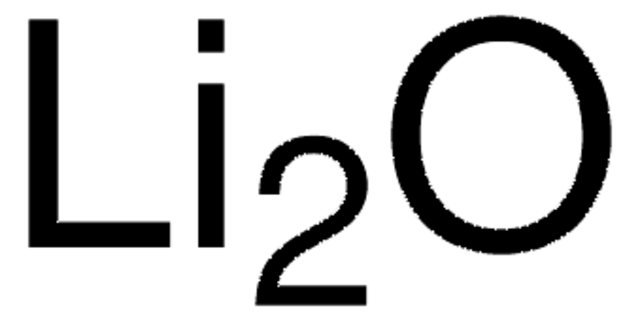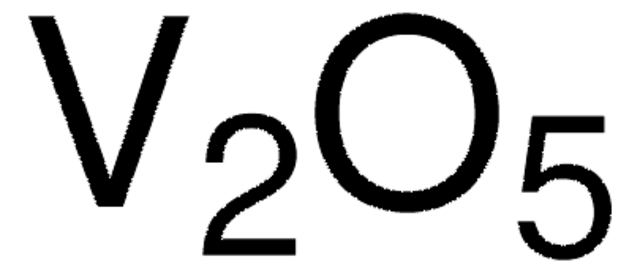254274
Lithium hydroxide monohydrate
99.95% trace metals basis
Synonyme(s) :
Lithine hydrate
About This Item
Produits recommandés
Niveau de qualité
Pureté
99.95% trace metals basis
Forme
crystalline
Caractéristiques du produit alternatif plus écologique
Design for Energy Efficiency
Learn more about the Principles of Green Chemistry.
sustainability
Greener Alternative Product
Impuretés
≤550.0 ppm Trace Metal Analysis
Application(s)
battery manufacturing
Autre catégorie plus écologique
Chaîne SMILES
[Li+].O.[OH-]
InChI
1S/Li.2H2O/h;2*1H2/q+1;;/p-1
Clé InChI
GLXDVVHUTZTUQK-UHFFFAOYSA-M
Vous recherchez des produits similaires ? Visite Guide de comparaison des produits
Description générale
Application
- To synthesize Olivine LiFePO4 nanoplates with different crystal orientations by glycol-based solvothermal process. It demonstrated that the crystal orientation of cathode nanoplates plays an important role in the performance.
- As a precursor for the synthesis of LiFePO4 platelets under hydrothermal synthesis conditions. It exhibited homogeneous particle size distribution, greater electrochemical performances and cycle life, and morphology control.
- To synthesize Ni-rich Li[NixCoyMn1–x–y]O2 gradient cathodes (NCM). These cathodes exhibited enhanced cycling and chemical stability due to their strong crystallographic texture, unique particle morphology, and highly correlated particle orientation.
- As a precursor to prepare porous salt hydrate-based composites for low-temperature thermochemical heat storage.
- As an electrolyte additive in lithium-ion batteries.
Mention d'avertissement
Danger
Mentions de danger
Classification des risques
Acute Tox. 4 Oral - Eye Dam. 1 - Skin Corr. 1B
Code de la classe de stockage
8B - Non-combustible corrosive hazardous materials
Classe de danger pour l'eau (WGK)
WGK 1
Point d'éclair (°F)
Not applicable
Point d'éclair (°C)
Not applicable
Équipement de protection individuelle
Eyeshields, Faceshields, Gloves, type P3 (EN 143) respirator cartridges
Faites votre choix parmi les versions les plus récentes :
Déjà en possession de ce produit ?
Retrouvez la documentation relative aux produits que vous avez récemment achetés dans la Bibliothèque de documents.
Les clients ont également consulté
Articles
Lithium-Ion Battery Performance: Dependence on Material Synthesis and Post‑Treatment Methods
Notre équipe de scientifiques dispose d'une expérience dans tous les secteurs de la recherche, notamment en sciences de la vie, science des matériaux, synthèse chimique, chromatographie, analyse et dans de nombreux autres domaines..
Contacter notre Service technique












